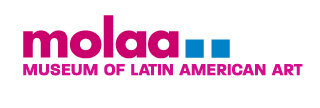Compassionate Lens:
Photos and Videos from the COLLECTION
Opening on April 29, 2023
Compassionate Lens: Photo and Video from the Collection
By Patrick Frank
Across Latin America, a great deal of art has a social goal, in addition to aesthetic or expressive purposes: Art can be a means to build knowledge and awareness of the lives and struggles of those outside our usual purview. Jose Sabogal wrote of the Indigenist movement in Peru of the 1920s: “We seek our identity in our own soil, our own humanity, and our own times.” This belief led him to paint rural workers in remote regions of the Andes. In 1936, Argentine artist Antonio Berni, whose works depicted people in the poorest neighborhoods, wrote, “Social realities, and the dramatic world in which we live, are breaking out of their shells and claiming their place in our art.” That desire, that hope, to use creativity to build human empathy, has animated artists across the continent.
Because they function through lenses, photography, and video can be among the most vivid ways to engage the sympathy and empathy of viewers. Both media begin by merely capturing what lies before the camera. Then artists add their personal input by selecting, arranging, composing, and developing the imagery that they see through the lens. This leaves them less free than a painter, who can invent shapes and textures for a blank canvas. But photography and video are more immediate. They place the viewer in the shoes of the artist, and the artist invites shared seeing as a means of building community and awareness.
This exhibition presents a small selection from MOLAA’s permanent collection. Most of these works were created by artists who are still living and working. Thanks to the generosity and foresight of donors, lenders, and curators, the social emphasis in the collection is strong, just as it is in Latin America.
The launching pad for this exhibition is representation: The artists use the lens to show us realities that we may not see otherwise. Beyond that, they use two principal tools, the first of which is humor. Several artists here take a sarcastic or ironic view of social circumstances, hoping to jolt us awake. The other tool is poetry: A carefully considered composition can add symbolic meanings and emotional appeal, to make an image memorable. By awakening us and provoking our response, this exhibition can resonate beyond its walls, as does any great or important art
Artists
Miguel Alvear (Ecuador)
Adriana Arenas (Colombia)
Sandra Boulanger (French-Bolivian)
Amalia Caputo (Venezuela)
Daniela Edburg (United States)
Carlos Garaicoa Manso (Cuba)
Ingrid Hernandez (Mexico)
Natalia Iguiñiz (Peru)
Nereo López-Meza (Colombia)
Miguel Ángel Mejía (Mexico)
Atelier Morales (Cuba)
Mario Opazo (Colombia)
Veronica Riedel (Guatemala)
Cinthya Soto (Costa Rica)

